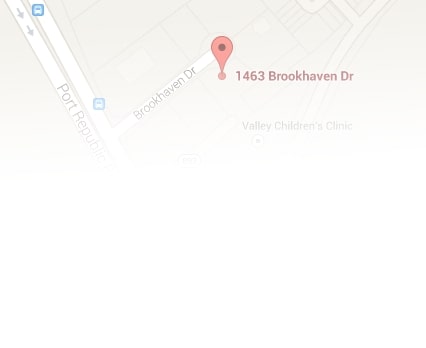
Intellectual Property Lawyer
Drunk driving is a menace that has claimed countless lives worldwide. With the rise of technology, inventors have sought ways to mitigate this issue, creating devices or solutions to prevent driving under the influence (DUI).
If you’ve developed a novel DUI prevention technology and believe it can save lives, patenting it is essential. Not only will a patent protect your intellectual property, but it also promotes innovation in this critical field.
This comprehensive guide from our friends at Patent, PC will walk you through the process of patenting your life-saving DUI technology.
For a legal consultation with a personal injury lawyer, call (434) 817-3100
Part 1: Understanding DUI Prevention Technology
Before diving into the patenting process, it’s crucial to understand the breadth and depth of DUI prevention technology available.
The Essence of DUI Prevention Technology
DUI prevention technology aims to restrict or dissuade individuals under the influence of alcohol or other intoxicants from driving. These technologies ensure roads remain safe, and potential accidents are averted.
Current Technologies in the Market
Several devices and systems are currently available, including:
- Breathalyzers with Engine Locks: These devices require drivers to take a breath test before starting the car. If alcohol levels exceed legal limits, the vehicle remains immobilized.
- Facial Recognition Systems: Advanced tech solutions can recognize signs of intoxication from a driver’s facial expressions and eye movements.
- Wearable Devices: These gadgets monitor alcohol levels through sweat and send alerts or notifications if levels exceed the set limit.
Part 2: Importance of Patenting DUI Prevention Technology
Creating a technological solution is just the starting point. Securing it legally should be your next step. Here’s why:
Click to contact personal injury lawyers today
Protecting Your Intellectual Property
A patent ensures that others cannot produce, sell, or use your invention without your consent. This protection lasts for 20 years, ensuring that your hard work and investment yield returns.
Stimulating Further Innovation
Patenting sets a foundation for others in the field, pushing them to build upon existing tech or innovate in new directions.
Complete a Case Evaluation form now
Gaining Market Advantage
With patent protection, you can establish a strong market presence, deterring competitors and potentially collaborating with major automotive brands.
Attracting Investment
Investors are more likely to fund patented technologies due to the security and potential profitability they offer.
Part 3: Navigating the Patent Process
Patenting can seem daunting, but with the right steps, it becomes manageable.
Preliminary Research
Before submitting a patent application, research existing patents to ensure your technology is unique. Utilize databases like the United States Patent and Trademark Office (USPTO) for this purpose.
Preparing a Detailed Description
Your patent application must detail how your technology works. Include diagrams, flowcharts, and a comprehensive written explanation. Ensure that a person skilled in the field can replicate your invention using this description.
Claims
In the patent application, the claims section is critical. It defines the boundaries of your invention – what it does and how it does it. Make your claims specific yet broad enough to cover slight modifications of your invention.
Filing the Application
Once your application is ready, submit it to the relevant patent office. In the U.S., this would be the USPTO. Ensure you pay the necessary fees and await their response.
Addressing Feedback and Potential Rejections
It’s common for the patent office to have queries or feedback. Sometimes, they might even reject your application based on specific grounds. Address these concerns promptly and adequately, making necessary adjustments to your application if required.
Part 4: Collaborating with Experts
To successfully navigate the intricate patenting landscape, collaboration is key.
Engaging a Patent Attorney
While you might understand your technology best, a patent attorney knows the ins and outs of the patenting process. They can guide you in drafting claims, addressing feedback from the patent office, and ensuring your technology gets the protection it deserves.
Collaborative Design Process
Sometimes, during the patent application process, you might discover aspects of your technology that need improvement or tweaking. Collaborating with engineers or designers can help refine the invention, making it more effective and increasing the likelihood of approval.
Keeping Abreast with the Latest in DUI Technology
The DUI prevention field is dynamic. Regularly updating your knowledge ensures you stay ahead. This awareness can be particularly beneficial when addressing feedback from the patent office, showing them that your invention is not just novel, but also ahead of the curve.
Part 5: Beyond Patenting – Promoting and Monetizing Your Technology
With your patent in hand, the next steps involve introducing your technology to the market and reaping the benefits of your hard work.
Marketing and Branding
Raise awareness about your patented technology by:
- Trade Shows & Exhibitions: These platforms are excellent for showcasing your invention to a targeted audience.
- Collaborations with Automobile Manufacturers: Pitch your product to leading car manufacturers. If they see its value, they might integrate it into their upcoming models.
- Digital Marketing: Utilize online platforms, from social media to specialized forums, to increase visibility.
Licensing Opportunities
Instead of manufacturing and selling the product yourself, consider licensing it to other companies. You’ll receive royalties for every unit sold or used, providing a steady income stream.
Continuous Innovation
Even after patenting, continue refining and upgrading your technology. This approach not only enhances its effectiveness but also positions you as a thought leader in DUI prevention.
Part 6: Ethical Considerations in DUI Prevention Technology
While the primary goal is to save lives, some ethical aspects must be considered.
Data Privacy
If your technology is an internet technology, that collects user data, ensure it’s protected. Users should be informed about data collection, and their consent is essential.
Accuracy and False Positives
Your device must be highly accurate. False positives, where a sober driver is wrongfully identified as intoxicated, can erode trust and lead to unnecessary inconveniences.
Accessibility
Ensure your technology is accessible to all, regardless of their economic status. Saving lives shouldn’t be a privilege only for those who can afford it.
Conclusion
Creating a life-saving DUI prevention technology is commendable.
Yet, to ensure its impact is widespread, understanding the patenting process and leveraging the protection it offers is critical. With your invention patented, you not only safeguard your intellectual property but also contribute significantly to safer roads and a brighter future.
Collaborate with experts, continuously innovate, and prioritize ethics in your endeavors. Your invention might just be the next big thing that reshapes road safety for the better.
Call (434) 817-3100 or complete a Case Evaluation form



